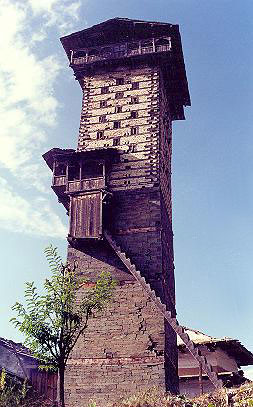Buildings are the Worst Killers than the Earthquake. Earthquakes don’t kill; badly built houses do..
In certain hilly areas there were many traditional methods of construction which could allow the buildings to withstand the high intensities of earthquakes.
I would like to brief you guys on one such ancient design of a structure in the hilly regions which has stood through the time without destroying when the earth quakes strike.
The building I’m taking about id “CHAINI KOTI TEMPLE” or “kath kunni” as it is locally known. This building lies in the himachal Pradesh in India. it is more than 5oo years old. These are actually built as temples for the local deities but became watch towers during wars.
- Deodar, wood of the gods found in the Himalayas, is insect and borer resistant; it can also take extremes of rain and snow. Its timber, which can bear lateral stress, is ingeniously crafted by traditional master masons. That’s why the nail-less and cement less towers have been holding out against ground tremors for 500 years.
- Quake resistant houses should have tie-bands (to act like beams) just above the level of the floor, the level of the doors and windows, and another at the roof level.
- Corners are the most vulnerable and ought to be strengthened. Elasticity of the structure can be enhanced with flexible steel rods or wood batons at corners.
- Doors and windows should be few, small and symmetrically placed away from the corners.
- The house should be as light as possible.
- it has a heavy base or plinth, which keeps the centre of gravity within the base.















